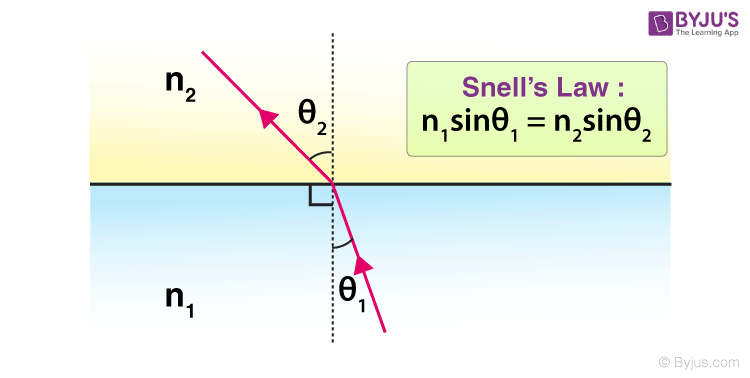The Law of Refraction - Snell's Law

Discovered by Willebrord Snell in 1621, the laws of refraction are also termed Snell’s law. As we know, the refraction or bending of light takes place when it travels from medium to medium. The degree of bend is predicted with the help of this law. To comprehensively understand a discussion on lenses and their application, one must be familiar with the concepts of refraction.
The point of refraction is created where the incident rays lands and the angle that it makes with the refracted ray not forgetting the normal line that is dropped on the plane perpendicularly. The medium through which the rays of light are passing creates a considerable difference in refraction unlike in reflection of light. The refractive indices make the dependency on the medium apparent in Snell’s Law.
Complex Snell’s Law Diagram
A complex diagram of Snell’s Law displays something that is not directly obvious. A ray of light passes through the glass and standing behind it the viewer experiences refraction through three media. The situation is represented in the following diagram.

What we see in this is that the light ray incoming is parallel to the outgoing light ray. As the angle of incidence (i) and angle of refraction (r) thus rearranging Snell’s Law: n1sin(i) = n2sin(r) (n1/n2)sin(i) = sin(r) This gives us a qualitative representation of refraction. Thus, we’ll use this equation to understand the concept of multiple refractions. When moving from a section of the high index to a region of a low index, the ray will refract away from the normal. When the ray moves from a section of the lower index to the higher index the ray of incidence will bend towards the normal.
For more information Wikipedia